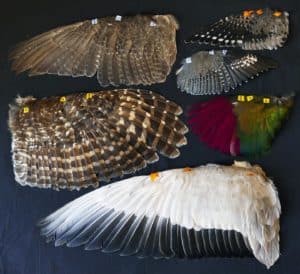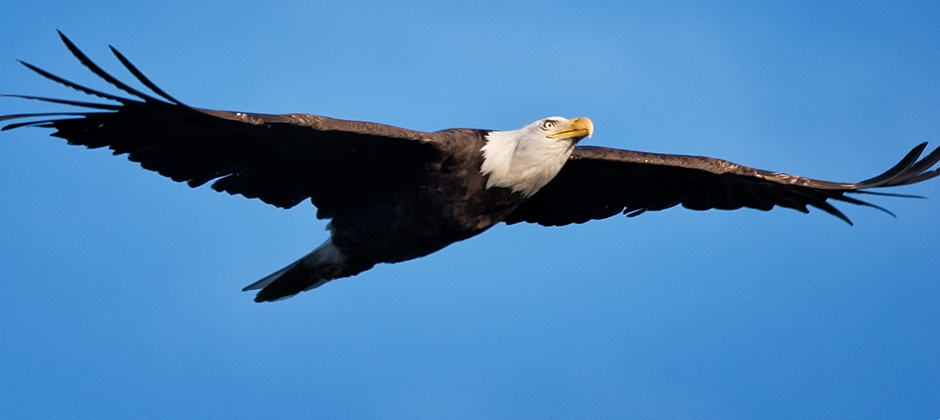Share this article
Bird wing study reveals different flight development paths
Different flight preferences and the size of the avian vessel are responsible for the vastly different shapes of bird wings.

Spread wings from (top to bottom) a gyrfalcon (Falco rusticolis), American kestrel (Falco sparverius), belted kingfisher (Megaceryle alcyon), red-tailed hawk (Buteo jamaicensis), red-crested turaco (Tauraco erythrolophus), and bar-headed goose (Anser indicus). Specimens from the University of British Columbia’s Beaty Biodiversity Museum. ©Vikram Baliga, University of British Columbia
Researchers categorized 61 bird species by flight styles like hovering or soaring and analyzed their wing characteristics like wingspan, shape and flexibility. They also compared the birds on an evolutionary tree to figure out how different wing types diverge from each other mostly based on changes in elbows and wrists. The team found the glide of bald eagles (Haliaeetus leucocepalus) depends on how the bird maintains its limb position by extending its elbows.
Hummingbirds, on the other hand, have more restricted elbows but a large range of wrist movement. “By looking across avian flight diversity, our research has determined one component of how birds use their wings,” said Vikram Baliga, a researcher at the University of British Columbia and lead author on the study. “We’re working toward understanding how wings in nature morph during flight so that the knowledge can be applied to unmanned aerial vehicles — particularly in turbulence, wind gusts, or when attacked by aerial predators.”
Header Image: More than wing shape or size, the range of motion appears to determine why bald eagles soar and hummingbirds hover. ©Rick Miller








